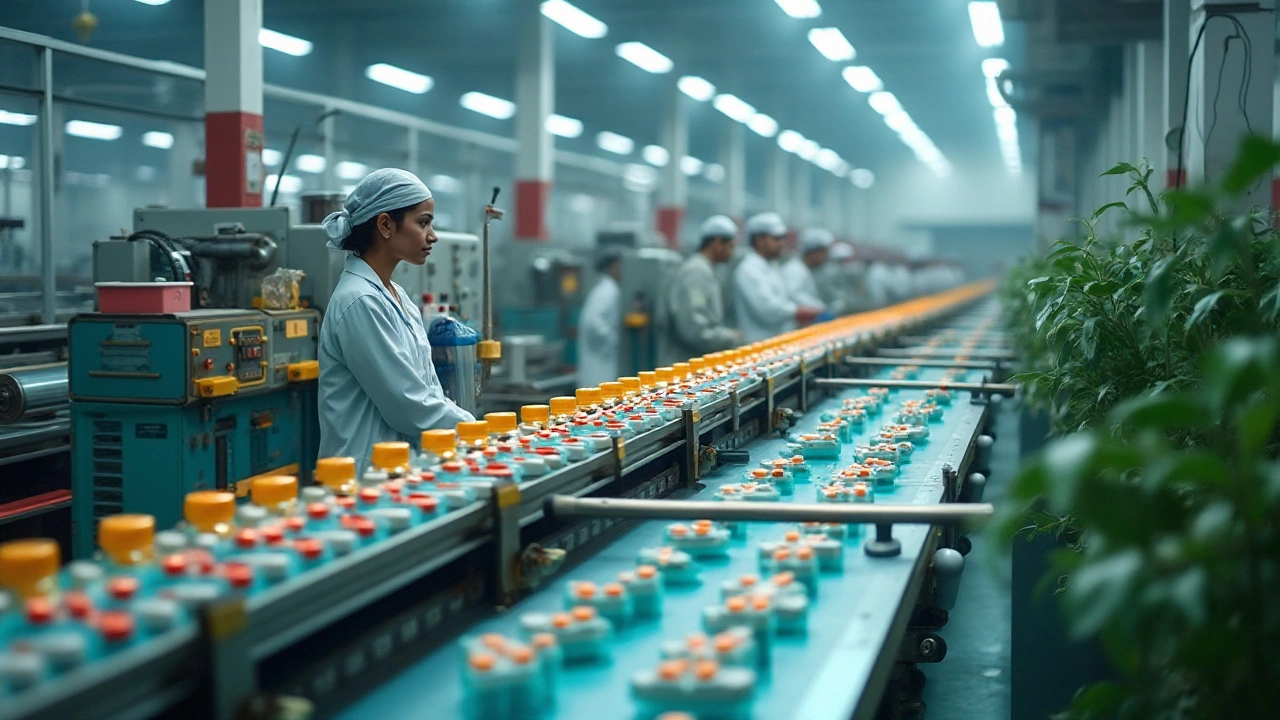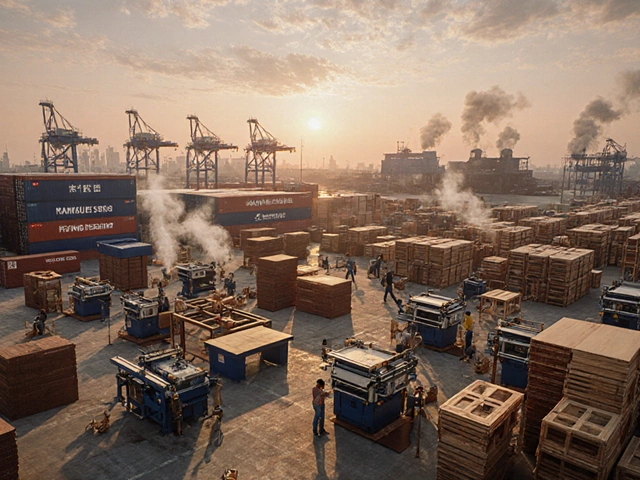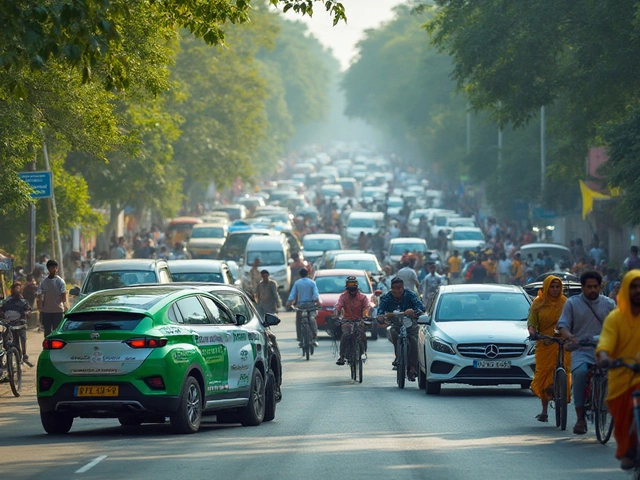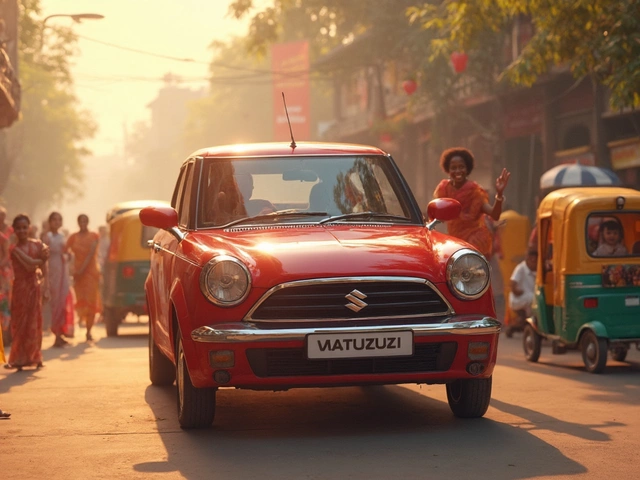India, known for its vibrant culture and rich history, has carved a significant niche for itself in the pharmaceutical industry. Over the past few decades, the country has emerged as a major player in the global market, particularly in the production of generic medicines. This accomplishment didn't come about by chance but as a result of strategic policies, investments in science and technology, and an expansive talent pool of skilled professionals.
Manufacturers in India produce a remarkable variety of pharmaceutical products, which are not only affordable but also adhere to stringent quality standards. This ability to produce high-quality, cost-effective medicines has enabled India to become the pharmacy of the world. Yet, this status comes with its set of challenges, from maintaining regulatory standards to navigating complex international trade laws.
As the world grapples with evolving healthcare needs and unprecedented health challenges, India's role becomes even more critical. This article delves into the factors that have positioned India as a pharmaceutical powerhouse, the economic and health impacts of its prominence, and the future outlook for the industry. Understanding these elements will provide a clearer picture of India’s critical contribution to global health and the dynamics of the pharmaceutical market.
- Rise of Indian Pharmaceutical Industry
- Economic Impact
- Role in Global Generic Medicine
- Challenges and Obstacles
- Future Prospects
- Impact on Global Health
Rise of Indian Pharmaceutical Industry
The journey of India to becoming a pharmaceutical industry giant began in earnest post-independence, but it was truly accelerated in the latter half of the 20th century. Initially, the country relied heavily on imports for its medicinal needs. However, the 1970 Patent Act, which excluded food and drugs from eligibility for product patents, set the stage for a burgeoning domestic industry. This legislative change encouraged local companies to develop processes for manufacturing complex drugs, taking advantage of the loophole that allowed process patents instead.
By the 1990s, important and strategic economic reforms, including market liberalization policies, further opened up avenues for growth and innovation. These changes invigorated the industry, which began to align itself heavily with global markets and implemented sophisticated production techniques to produce both branded generics and active pharmaceutical ingredients (APIs). Remarkably, India wasn't just keeping pace; in many areas, it was setting new standards, with companies like Ranbaxy, Cipla, and Dr. Reddy’s building a solid reputation for quality and cost-efficiency. These progressions allowed India to make a significant leap in the global export market, where it remains a key player today.
The rapid expansion of India's pharmaceutical sector is not just rooted in policy changes but is also driven by a culture of innovation and research. Institutions across the country have invested heavily in cultivating a skilled workforce adept in biotechnology and pharmaceutical sciences. This collective effort across academic, governmental, and private sectors has resulted in breakthroughs that are both beneficial and lucrative. Today, the country’s pharmaceutical education and R&D infrastructure is among the best in the world, providing a steady pipeline of skilled workers and innovative research projects that fuel continued growth.
As the industry evolved, so too did the emphasis on quality and regulatory compliance. Indian pharmaceutical companies became adept at adhering to the Good Manufacturing Practice (GMP) standards set by international regulatory bodies such as the U.S. Food and Drug Administration and the European Medicines Agency. This compliance not only widened the market reach for Indian pharmaceuticals but also bolstered their reputation as reliable global suppliers.
"The emergence of India as a major player in the global pharmaceutical landscape proves that strategic policy, innovation, and quality can transform an industry," noted a report by the World Health Organization.
In today’s context, as the world faces unprecedented health challenges, India's capacity to produce affordable and effective medications is more critical than ever. This nation, once dependent on drug imports, now supplies over 50% of the global demand for various vaccines, 40% of the generic demand in the United States, and 25% of all medicine in the UK, according to industry reports. This remarkable transformation from dependency to dominance underscores the resilience and strategic foresight that have defined India's approach to growing its pharmaceutical industry.
While challenges persist, including pricing pressures, IP regulations, and competition from other low-cost manufacturing nations, Indian pharma continues its upward trajectory. The story of this industry's rise is not just about commercial success but also about improving global access to essential medicines. It demonstrates how a nation's industrial policy can have a transformative social impact, elevating millions out of poverty by creating jobs, improving health standards, and ultimately enhancing the quality of life worldwide.
Economic Impact
The economic impact of India's pharmaceutical industry is significant, weaving a rich tapestry of growth, employment, and innovation across the nation. For decades, the pharmaceutical sector has been a cornerstone of the Indian economy, contributing a substantial chunk to the country's GDP. India's role as a leader in the global market for generic medicines has allowed it to corner approximately 20% of the worldwide supply, a fact that illustrates its mastery of this crucial economic domain. This has led to an influx of foreign earnings and has positioned India as a major player in global trade. Not only does this strengthen India's economic stature globally, but it also creates thousands of jobs, spurring development in both rural and urban areas.
One noticeable impact is the influx of foreign direct investment (FDI) which has been steadily increasing over the years. As companies worldwide recognize India's expertise and capability in pharmaceuticals, they are increasingly investing in Indian ventures. According to a 2023 report by the Department of Industrial Policy and Promotion, the Indian pharmaceutical sector attracted about $1.5 billion in FDI, making it one of the leading industries in terms of foreign investment. This capital inflow not only boosts the industry but also propels advancements in technology and manufacturing processes.
The economic impact stretches beyond financial metrics. The accessibility of cost-effective drugs from Indian manufacturers has improved healthcare outcomes globally, saving countless lives. Pharmaceutical exports from India reached nearly $25 billion in 2023, reflecting its critical role in global health security. A Deloitte analysis noted, "India's contribution to the worldwide provision of life-saving medicines has been transformative, aligning economic growth with humanitarian achievement."
Additionally, the sector fosters a symbiotic growth cycle. As the industry prospers, it invests more into research and development, leading to new innovations and drug formulations. This innovation, in turn, strengthens India's pharmaceutical reputation, attracting even more business and investment. The presence of several key players in the sector – be it domestic giants like Sun Pharmaceuticals and Dr. Reddy's or international collaborators – creates a competitive environment that drives quality and efficiency.
Given the vast network of suppliers and distributors, the industry acts as an economic multiplier, benefiting allied industries such as chemicals, packaging, and logistics. These interconnected industries experience a boost as pharmaceutical companies demand high-quality inputs and sophisticated distribution solutions. Additionally, education and training institutions have expanded to meet the needs of the industry, leading to an ecosystem that nurtures a skilled workforce.
A quick glance at a few statistics underscores the pivotal role that pharma manufacturers play in India. A significant proportion of the industry's production is concentrated in key regions such as Hyderabad and Bangalore, known collectively as "Pharma cities.” This concentration creates regional economic hotspots that drive innovativeness and employment, echoing the dynamic spirit of the Indian pharmaceutical industry as it marches into the future.

Role in Global Generic Medicine
India's role as a key player in global generic medicine production is monumental. The country stands as the largest provider of generic drugs worldwide, accounting for nearly 20% of the global supply by volume. This remarkable feat stems not only from the country's vast manufacturing capabilities but also its innovative approaches in pharma production. The emphasis on cost-efficiency without compromising quality has allowed Indian pharmaceutical companies to penetrate markets across the world, delivering life-saving medications at a fraction of the price compared to branded counterparts.
The journey of India towards becoming a leader in pharmaceutical industry initiated with significant policy changes in the late 20th century. Patents were modified to encourage local drug development and manufacturing innovations that avoided direct infringements of existing patents. This led to a boom in generic drug production, attracting considerable global attention. As of now, Indian companies supply more than 60% of the world’s vaccines and about one-third of the demand for generics in the major pharmaceutical markets of the United States and Europe.
The World Health Organization has often highlighted the pivotal role India plays by stating, "India's pharmaceutical sector assists in lowering the costs of medicine globally, rendering it indispensable for maintaining the accessibility of healthcare".This influence extends to generic medications crucial for treating prevalent conditions like cardiovascular diseases and diabetes, which require consistent and affordable supply. Owing to its robust infrastructure and a well-educated workforce, India continues investing in research and development, propelling the country to the forefront of producing highly demanded drugs, including antibiotics and antiretrovirals.
In addition to traditional manufacturing, the Indian pharma manufacturers are increasingly engaging in research-driven partnerships and collaborations with international firms. These strategic alliances enhance capabilities in complex generic production and biosimilars, significantly impacting chronic and rare diseases management. Companies like Cipla, Sun Pharmaceuticals, and Dr. Reddy’s Laboratories remain at the cutting edge, often being the first to introduce generic versions of blockbuster drugs post-patent expiry. This not only aids global health but also sustainably boosts the Indian economy.
One distinctive feature of India's pharmaceutical landscape is its commitment to adherence and improvement of international regulatory requirements. Indian companies have earned the trust of global regulators by regularly obtaining approvals from entities like the U.S. Food and Drug Administration (FDA) under stringent criteria. The presence of an overwhelming 500+ FDA-approved facilities in India underscores the nation's compliance with high-quality manufacturing practices, further solidifying its reputation on the global stage.
As the demand for generic medications grows, fueled by increasing healthcare needs and budget constraints worldwide, the strategic impact of India’s pharmaceutical sector becomes undeniable. Its model has fueled a revolution in making affordable medication accessible, paving the way for future innovations and sustainability in the global healthcare system. With a keen focus on increased production, ethical practices, and technological advancements, India is set to continue its role as an indispensable player in the global market.
Challenges and Obstacles
The journey of India as a leading force in the pharmaceutical industry is not devoid of hurdles. One of the most pressing challenges is the stringent regulatory landscape that varies widely across different countries. Pharmaceutical manufacturers in India must navigate a complex web of regulations, ensuring compliance with stringent quality standards set by international bodies such as the US FDA and the European Medicines Agency. This regulatory maze demands constant vigilance and adaptability, often requiring significant financial and human resources to maintain compliance and avoid product recalls, which can have crippling economic implications.
Moreover, intellectual property rights pose another significant challenge. The balance between promoting innovation through patent protection and ensuring access to affordable medicines is a delicate one. Indian pharma companies, known for their prowess in producing generic medicines, often find themselves at the center of controversies related to patent infringements. The industry's emphasis on generic drugs can sometimes clash with the stringent patent laws enforced by developed nations, leading to friction and complicated legal battles. A statement from a 2022 World Health Organization report highlights this challenge, noting:
"Maintaining the balance between innovation and accessibility remains a critical issue for all nations, but especially for those like India that lead the world in generic drug supply."
Another challenge is the fierce competition within and outside of India. While the domestic market is bustling with more than ten thousand manufacturing units, competition from countries like China is noteworthy. China, with its immense manufacturing capacity and strategic pricing, poses a continuous threat to India's dominance in pharmaceuticals. This forces Indian companies to innovate, increase efficiency, and improve product offerings continuously. Economic fluctuations, such as currency volatility, also impact the export-driven industry, affecting global competitiveness and profit margins.
Finally, infrastructure and research and development (R&D) funding remain areas needing improvement. While India boasts a large pool of scientific talent, investments in R&D infrastructure lag behind those of Western counterparts. Developing cutting-edge drugs requires not only human resources but also state-of-the-art facilities and substantial financial backing. Despite these gaps, Indian companies are increasingly forming collaborations with global counterparts to bolster innovation. Additionally, issues such as a lack of regulatory harmonization within the domestic market between different states further complicate operations, leading to inefficiencies and delays. Addressing these challenges is essential for India to sustain its momentum and leadership in the global pharmaceutical market.

Future Prospects
As we look toward the future of India's pharmaceutical industry, it is clear that its trajectory is set for continued ripple effects on the global market. With a growing population and an increasing demand for affordable medication, India is well-positioned to expand its reach and impact. The country’s robust pharmaceutical sector is poised to venture into newer markets, while maintaining its dominance in generic drug manufacturing—often hailed as the cornerstone of its pharma empire. Leveraging its cost-effective production capabilities, India could soon be the go-to destination not just for bulk production but also innovation in drug development.
An important step in India's pharmaceutical industry future involves strengthening internal research and development. By investing more in R&D, India has the potential to move from an imitator of existing drugs to an innovator of novel treatments. In the coming years, this shift could promote the emergence of home-grown companies that not only match the quality of their Western counterparts but also lead in groundbreaking research and treatments, particularly in fields like biotechnology and personalized medicine.
There’s also an increasing emphasis on partnerships between Indian manufacturers and global healthcare giants. Such alliances can bolster the transfer of technology and expertise, resulting in improved drug formulations and faster time-to-market for new drugs. As mentioned by the World Health Organization, "The collaboration between countries will be pivotal in addressing global healthcare challenges." This cross-border cooperation can provide a stronger foundation for tackling global health issues—ranging from pandemic preparedness to combating chronic illnesses—by leveraging India's production prowess.
Additionally, India’s path ahead includes navigating regulatory challenges to enhance its reputation globally. Striving for improvements in matters of compliance with international standards is essential, as this will enhance credibility and trust in Indian pharmaceuticals worldwide. By adopting more stringent quality regulations domestically, the industry can dispel concerns regarding drug quality and safety, thus facilitating easier entry into high-regulation markets such as Europe and North America.
The development of infrastructure is another cornerstone for sustainable growth in the industry. Technological advancements, modern manufacturing facilities, and the creation of specialized industrial zones can help boost production capabilities and streamline distribution networks. As digital transformation increasingly influences global industry, India's pharma sector could be revitalized by embracing digital health solutions—from telemedicine to AI-driven drug discovery—further broadening the horizon for innovation and efficiency.
Looking forward, the possibility of integrating traditional Indian medicine into mainstream pharmacology offers untapped potential. The rich heritage of Ayurvedic medicine, when synergized with contemporary pharmaceutical practices, may not only pave the way for pioneering treatment methods but also carve a niche for India in areas yet unexplored. This fusion of ancient wisdom and modern science could introduce novel therapies that address current unmet needs across the globe.
Impact on Global Health
The impact of India's pharmaceutical industry on global health is profound, touching millions of lives with its access to affordable medications. As a vital player in the pharmaceutical landscape, India accounts for about 20% of the world's supply of generics by volume, helping to lower costs and increase accessibility. Indian manufacturers are often the lynchpin in ensuring the reach of essential drugs, especially in low and middle-income countries hit hardest by costs. This access is critical in managing diseases such as HIV/AIDS, where affordable generics have drastically increased treatment rates and improved quality of life for many.
The economic and humanitarian role played by Indian pharma manufacturers is underscored by initiatives to fight global pandemics and health crises. India has emerged as a key supplier during the COVID-19 pandemic with its rapid vaccine development and mass production capabilities. These capabilities have enabled India to contribute to the COVAX initiative, aimed at equitable vaccine distribution globally, which is a testament to its integral role in supporting worldwide health infrastructure. A quote from Dr. Soumya Swaminathan, Chief Scientist at WHO, captures this spirit:
"Affordable and high-quality Indian generics have been the backbone of a global health safety net, reaching the furthest corners of the world."
Another facet of India's impact is innovation in pharmaceutical production techniques and processes. The adoption of new technologies, such as biologics and complex generics, is increasingly putting India at the forefront of the industry. By coupling innovation with a strong network of medical research institutions, India sets examples of how developing nations can drive forward pharmaceutical advancement. As the industry grows, there is an opportunity to further Indian influence through research collaborations focused on combating neglected tropical diseases and emerging viral threats, ensuring that no disease is left unattended in the global fight for health.
The ethical dimensions of India’s pharmaceutical success also invite discussion. While the market-driven approach has provided broader access, it raises questions about profit margins and the potential pressure on drug pricing on a global scale. Debates continue regarding patent laws and the flexibility or rigidity required to foster both innovation and accessibility. These issues are set against the backdrop of an ever-increasing demand for medicines, highlighting the need for a balance between economics and compassion in global health strategies. As India solidifies its role, how these issues are navigated will be crucial to maintaining its position as a benevolent force in healthcare.
India’s journey from a local player to a global leader in pharmaceuticals is not only about conquering markets but also about assuming greater responsibility in a world where healthcare is as much a right as a privilege. The lessons learned from India's experiences could help shape global strategies in pharmaceutical manufacturing, ensuring health care systems worldwide remain resilient and responsive to new challenges. As we move forward, observing how India manages its growth while maintaining its humanitarian goals is an essential part of predicting the future dynamics of global health.





